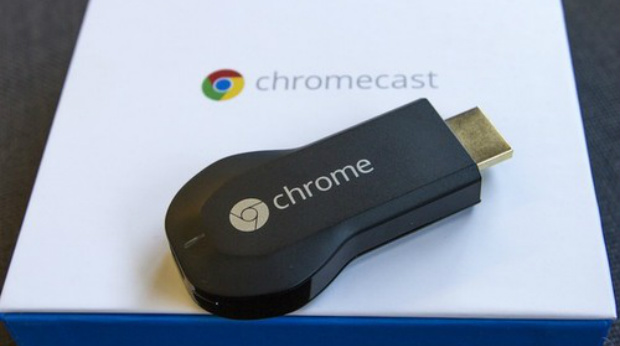There is no arguing with cheap. The Chromecast from Google is a device that plugs into your TV via a HDMI port and allows you to connect directly to services such as YouTube or Netflix and it costs just €39.
The device itself is a bit bigger than your average USB memory stick and gets its connectivity via Wi-Fi. It is controlled via an app that is Android and iOS available. There are a number of apps that are described as “Cast Ready”, which include YouTube, Netflix, Google Play Movies, Google Play Music, Vevo and BBC iPlayer, though alas, not RTE Player.
This selection might seem a little limited, and to be honest it is, but one jewel in the crown is compatibility with Plex. This is a client sever media streaming system. So it means that with the Chromecast and Plex you can stream media from a PC, media server or NAS box direct to your TV.
Set up is fairly easy. In the box you get a power plug, cable and the device itself. Plug the plug into the wall socket, the cable into it and the Chromecast and plug the Chromecast into a free TV HDMI socket. From the app on a smart phone or tablet, search for available devices. Fill in your Wi-Fi connection details and away you go.
Then, open a compatible app on your control device, such as YouTube and a Chromecast option appears as you select media. Simply tap the Chromecast icon and media plays on your TV.
For testing purposes, a Nexus 7 tablet (kindly supplied by Google), was used as the control device. With a tested Wi-Fi speed of around 15Mb/s available at the TV and the control device, all media were able to play smoothly. And to ensure, dear reader, that a comprehensive and exhaustive test was performed, a variety of content was viewed. From the latest HD music videos of John Grant to old episodes of documentary series such as Wings of the Red Star, the experience was seamless, with the selected media playing just as well on the TV as on the control device.
Some reports have emerged that early Chromecast devices were susceptible to Wi-Fi interference. No such problems were encountered in testing, but the use of an HDMI extender that moves the device a little further from the body of the TV apparently cures such ills, or at the very least, improves Wi-Fi reception.
At this point it is worth pointing out that the Chromecast does not improve video quality, so if it is poor from the original source, thus will it appear on the TV. That said, when a HD movie was selected from Netflix (the 2007 epic Arn the Knight Templar), the Chromecast easily coped with the load, allowing the sumptuous detail to shine through (thanks to Netflix for a subscription to facilitate testing).
While it may be said that there is a still relatively limited number of compatible apps, what is available actually covers a pretty broad spread of content, and is expanding. The Plex compatibility in particular would make this a worthwhile addition to your media gadgetry. For €39, you can hardly go wrong. It would be good if RTE’s Player were compatible. It is possible to simply cast your control device screen directly to the TV, which does work with the RTE Player, but alas, without sound.
A full list of the Cast Ready apps is here.
For what it does, the Chromecast is a massive bargain and the app compatibility is only going to increase. When compared to Apple TV, it is less than half the cost (€99) and so, unless you’ve already got something that does all of this, the Chromecast is by far the best option.
www.google.com/intl/en_ie/chrome/devices/chromecast/index.html
TechCentral Reporters







Subscribers 0
Fans 0
Followers 0
Followers